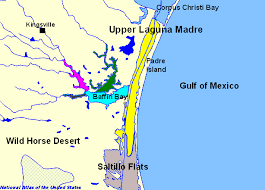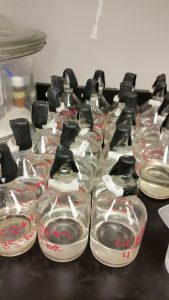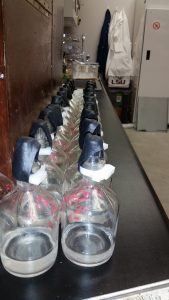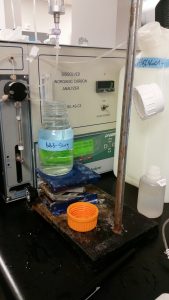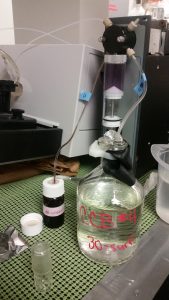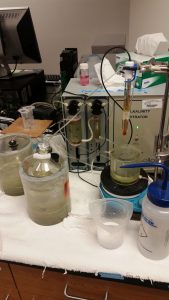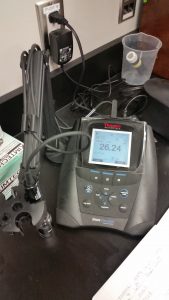I had the pleasure of working with Dr. Xinping Hu and his research technician Cory Staryk in their Carbon Cycle Lab.
Dr. Hu’s research focuses on the Carbon Cycle in estuaries and coastal environments. This research will determine the effects of climate change in estuaries, the carbon cycle in the ocean, and ocean acidification.
Who We Are
What We Did
Data collection is important for all researchers. In the carbon lab, I helped with the documentation of the data collected by research technician Cory Staryk. He would collect samples from our local waters.
There are several collection sites within each body of water. For example in Baffin Bay water samples are collected from 9 stations. At each station two samples are collected. One from the surface and one from the bottom. These samples are tested and the data collected is used to help determine changes in our estuaries and bays.
Step 1-Once the samples arrive at the lab we can begin the testing process. The first step is to get a few samples into a water bath. The purpose of this is control. We want to test every sample at the same temperature.
Step 2-We can then move to the Dissolved Inorganic Carbon Analyzer or DIC Analyzer. This machine tells us how much Carbon Dioxide is in the water. Before we can run any samples we have to first do a CRM test. CRM is Certified Reference Material. The CRM is basically a sample that has specific results associated with it. You use it to test the machines accuracy. In this lab the accuracy must be within .01 % prior to running any samples. The process can take anywhere from 30 minutes to 2 hours depending on the CRM results. After the CRM has been completed we can begin the sampling process. Each sample takes anywhere from 10 to 30 minutes to test for DIC. The results are recorded automatically electronically but also written as a backup.
After the sample is tested it goes back into a water bath to control the temperature.
Step 3-Now it is time to test the pH of the water. Knowing the pH can help us to determine if our water is considered neutral or not. The Carbon Dioxide in the water can change the overall pH and if the water changes the ocean life in that body of water can be significantly impacted.
Back to the water bath…again.
Step 4-Alkalinity Titrator-This also has to do with the pH of the water but it tells us how the water is able to neutralize acid. Basically is the water able to take on pollution and rainfall without changing the overall pH of the body of water. This machine also has to be tested with CRM prior to any samples to ensure it is working properly. This is the most time consuming step in this sampling process.
Last trip to the water bath!
Step 5-Time for the Salinity Measure. This tells us how much salt is in the water we are testing. We need to know this because it can change drastically after a storm or drought. The salinity can influence ocean life.
This is the end of the sampling process. At this point the samples are discarded or stored and shipped to other labs for additional testing. Each sampling site can be associated with several projects. The sampling bottles are cleaned, stored and labeled for the next trip.
What We Learned
Data collection and recording is an important piece of the research puzzle. The researchers collected samples, upon samples, upon samples of water from different locations. The samples need to be labeled, stored, processed, and the data recorded in a timely manner.
I learned how important data collection is to research projects.
Questions We Have
Working in this setting left me wondering how the climate impacts our local estuaries and bays and the living organisms within those bodies of water. While the research has shown some trends the data is still being collected and processed. We will have to continue to watch the research that Dr. Hu and his team conduct to determine how our local bays and estuaries are impacted by climate change.

